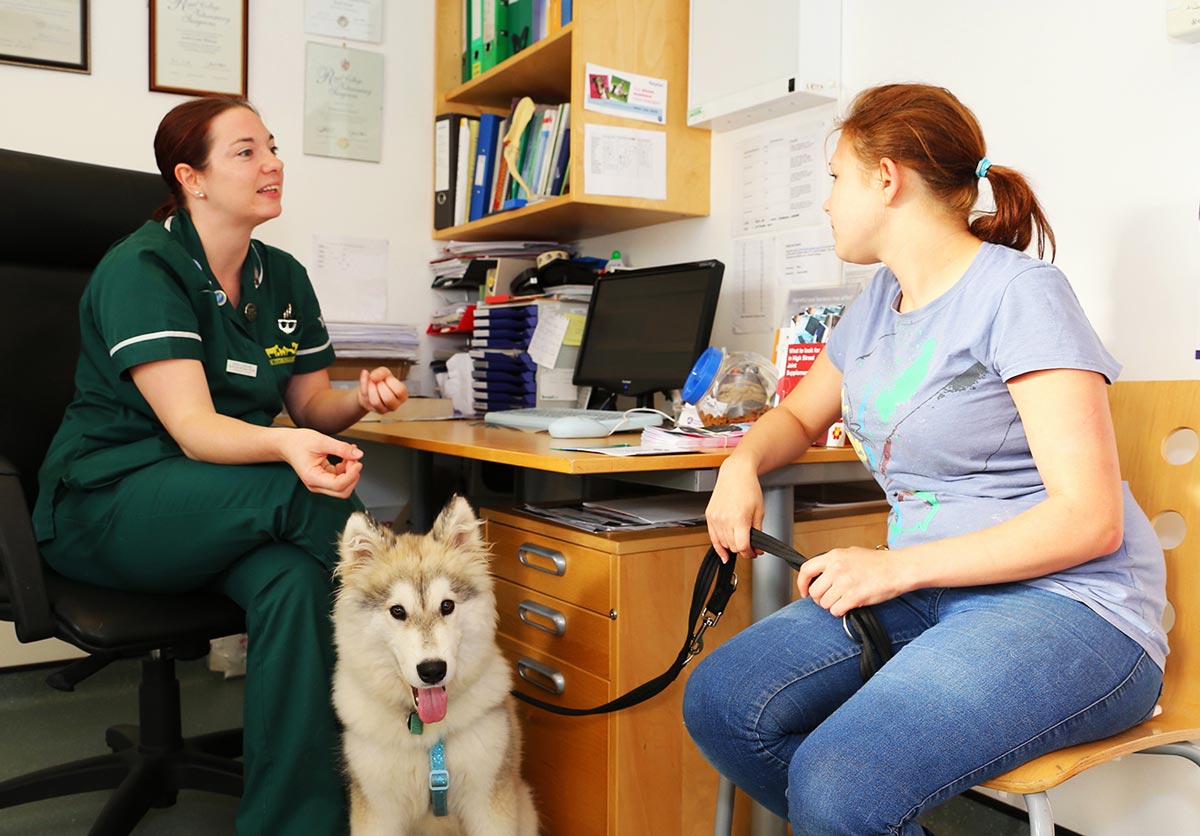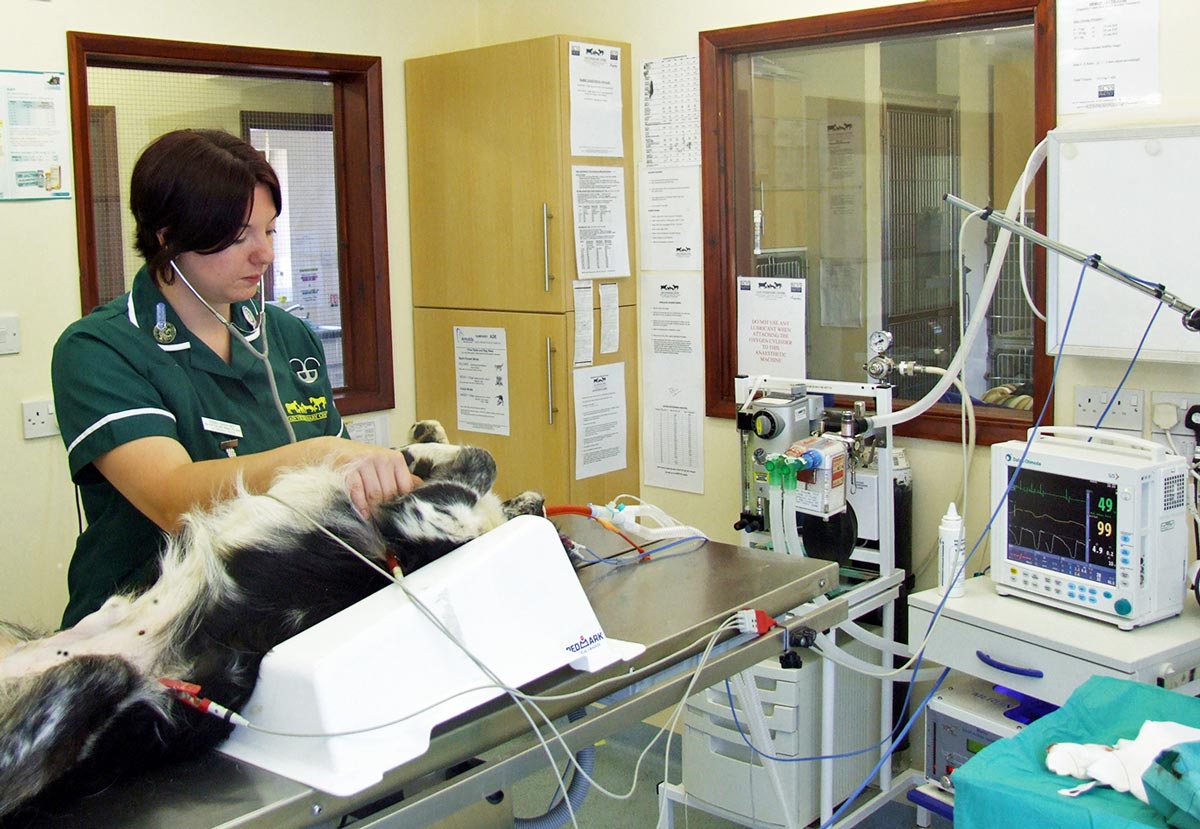16 Jan 2018
RVN Emma Gerrard details the protocol she designed to help owners follow the nursing plans they are given for pets with this condition.

Image © WerbeFabrik / Pixabay
VNs have a key part to play in helping owners follow the recommendations they have been given to help care for their pets with heart failure.
As part of an XLVets campaign to encourage greater uptake and compliance of cardiac disease management, the author developed a cardiac support nurse protocol now used by practices across the group to drive optimal cardiac patient care.
Congestive heart failure (CHF) is a condition commonly seen in practice, and can account for up to 38% of all cases presented with dyspnoea1. CHF can be caused by varying types of heart disease, including:
Hypertrophic cardiomyopathy is the leading cause of heart disease in cats, whereas, in dogs, mitral valve disease and dilated cardiomyopathy (DCM) are more common underlying causes.
Although a diagnosis of CHF carries a poor prognosis, it does not mean an instant death sentence. With careful medical, weight, diet and exercise management, symptoms can be eased and progression slowed, with this multimodal approach possibly leading to median survival times in dogs between 6 and 12 months1. The goal of treatment is to alleviate debilitating clinical signs – such as breathlessness, coughing and exercise intolerance – leading to an improvement in patient quality of life.
However, while management and treatment starts in the clinic, it is vital – for both the patient’s quality of life and disease progression – this is continued at home. It is here where clients play a key role in the management of their pet’s condition, becoming integral members of the pet’s care-giving team.
Once a patient returns home to start treatment, it is not uncommon to see problems with owner compliance.
This may relate to administering medication, following diet advice, monitoring symptoms or adhering to recommended exercise programmes.
This failure to follow what to us seems clear, critical advice can stem from:

Clear evidence exists that clinical outcomes and patient satisfaction improve when a consultation centres on the client and patient, rather than the health care professional2. As opposed to being a time when only information is imparted, better outcomes will be achieved if a collaborative approach with both parties actively involved takes place.
Studies in human medicine have demonstrated attending nurse-led heart failure clinics following discharge can improve survival times and self-care behaviour of those patients3. In this study, fewer patients had events (death or admission) after 12 months in the intervention group compared to the control group. The intervention group also had fewer admissions and days in hospital during the first three months, and had significantly higher self-care scores at 3 and 12 months compared to the control group.
Reinforcement of treatment advice and follow-up by the veterinary team is a key part of the CRAFT model:
Compliance = recommendation + acceptance + follow-through
This acronym represents the factors that must be addressed to increase adherence by the care-giver with treatment or other recommendations.
A landmark study by the American Animal Hospital Association identified successful communication as being the lynchpin of good client compliance4. Conversely, poor communication and lack of follow-up had a negative impact.
However, good communication isn’t just about imparting information. Key to the implementation of that information is understanding.
In the rushed, busy environment of the veterinary practice, checking understanding and probing for owner difficulties in implementing treatment can be easily forgotten, or not prioritised.
The nurse-led cardiac clinics in the Stromberg study3 illustrated how follow-up was key in the positive results of the intervention group.
The nurses involved were specially educated in cardiology; patient education was individualised, and included written and verbal information; and recommendations were given (and followed up) on lifestyle changes and weight, dietary and exercise management. Crucially, the nurses tailored the advice to the prior knowledge, education level and cognitive function of each patient, with an emphasis on self-care.
They also provided psychosocial support by creating a supportive relationship between the patient and nursing team – patients could contact nurses during working hours and, conversely, nurses contacted patients to provide social support and advise on difficulties with medications, side effects or deterioration in symptoms. Repeat consultations with cardiac medics could be arranged or, if the patient was stable and well-informed, it would be discharged to its primary health care provider.

These key elements are reflected in the XLVets cardiology initiative, where screening and support materials for member practices have been developed along with a cardiac support nurse protocol.
In the protocol, following initial diagnosis and therapeutic recommendations with the vet, a second consultation is offered with a nurse who has good knowledge of heart disease. This provides an invaluable opportunity for an owner to ask questions and discuss any worries. Part of the consultation might involve some degree of counselling, as the diagnosis of heart disease or failure is often very upsetting and may lead to anticipatory grief. The protocol for client support is similar to the human model, with several key principles addressed.
Good communication is two-way. After the vet has made the diagnosis and treatment recommendations, follow-up by the nursing team can check the client’s understanding and clarify, where needed.
Using closed questions, such as: “Have I explained that clearly?” or: “Do you have any questions?” is helpful, but it can be better to use open questions such as: “How do you feel about that?” and: “What are your thoughts on this approach?” Getting a client to repeat information back can help identify any gaps in understanding. For example: “Do you want to sum up your understanding of what I’ve said, so I can help with any outstanding questions?
We know during the initial consultation with the vet an owner will not only be adjusting to the news his or her pet has heart disease, but also trying to understand what this means for it. Taking in information on treatment plans and monitoring advice at this stage can, therefore, be overwhelming. Many leave the consultation room confused, in shock and stocked up with medications – the purpose of which, along with how to administer them, is not fully understood. This information overload is a common factor in compliance failure.
A follow-up consultation with the cardiac support nurse is a second chance for owners to absorb the information – it gives them the time to get their head around their pet’s diagnosis.
Ensure the owner has all instructions and key information about his or her pet’s condition and treatment regime in several formats. Different people have different styles of communication – some will be auditory, some visual and some touch-based.
Often, an individual will be a mixture of these, so you may wish to provide written information – such as disease leaflets, advice sheets or charts – or give video material or links to reliable sources of information on the internet, providing a reference point when he or she gets home. This tangible material will increase the chance of medications being successfully administered and management advice followed.
Taking time to show how to give medication is also vital for compliance and will help prevent future problems. Make owners aware of possible side effects of any medications, so they can watch for these at home and notify you.
Discuss the use of suitable low-salt treats and foods the owner can use to administer medication – a piece of banana or some peanut butter (no added salt and xylitol-free varieties only), for example.
You can direct owners to some great video resources on YouTube, such as International Cat Care’s video on how to give a cat a tablet:
A home care plan will include recommendations on exercise, diet, weight management and medication. Encourage owners to keep a diary of how their pet is doing, including observations on appetite, respiration, exercise tolerance, demeanour and symptoms. This is a good tool to help spot changes in a pet early that may signify:
Initially, the diary should be daily and, once a baseline has been established, twice weekly may be more appropriate.
Ask clients to bring this diary with them to appointments. It will help update you on the pet’s progress.
It’s important for patients with heart disease to be monitored regularly by the clinic to check for any signs of progression or deterioration. This is also helpful for owners and gives them a chance to voice any concerns or ask questions.
For pets with CHF, close monitoring following diagnosis is important to check how they are responding to their medication. Nurse clinics can play an important role here, both alongside and between vet consultations.
Initially, nursing support check-ups can be weekly until the patient is stabilised. They can decrease slowly to every three months, or monthly for dogs diagnosed with DCM. These check-ups have been linked with more successful patient outcomes.

It is vital owners recognise their pet’s condition will need life-long treatment and this treatment will change as the condition progresses. They will need to closely monitor their pet’s progress daily and alert the clinic to any changes noticed. Helping them understand their pet’s condition and why they get certain symptoms – and the significance of changes – will aid this. Acting sooner rather than later is vital with management of heart disease.
Lifestyle advice can include weight management, diet and exercise, as well as any adjustments needed around the home to help their pet. Check what sort of diet is being fed at the time. Raw, home-cooked or vegetarian diets may not be appropriate, while reinforcement of the importance of feeding a suitable diet and treats – for example, complete and balanced, low-salt (less than 100mg/100kcal) or low calorie, if overweight – will help ensure the pet’s metabolic needs are met. Ensure the client feeds the right amount to maintain the pet at a healthy weight; insisting on weighing the daily ration and dividing it into portions will be more accurate than feeding by sight or cup/bowl size.
Excess weight will place extra strain on the patient’s heart, so it is important for the owner to not overfeed. Equally, patients with heart disease are vulnerable to cardiac cachexia, as more energy is needed to compensate for an inefficient heart. It may also trigger appetite changes leading to weight loss. Therefore, weighing, body condition scoring and checking for muscle wastage (and recording the results) should be an integral component of every nurse check-up.
One parameter owners can check themselves is their pet’s resting respiratory rate. This is a sensitive and specific indicator of CHF in dogs diagnosed with heart disease. Ideally, this should be done when their pet is asleep and after exercise. It can help to detect deterioration and the onset of pulmonary involvement.
To help owners gain confidence in doing this at home, take time during the consult to demonstrate on their pet. Explain a rise and fall in their chest counts as one breath. Several apps have been developed to help record pet breathing rate. Providing guidance on what sort of respiratory rates are expected and what would be considered abnormal can help owners to be more aware and proactive.
Plus, these rates can be entered into the patient diary (daily to establish a good baseline and then ongoing twice weekly). Recording the following information is recommended:

Successful patient management can be achieved by proactively engaging clients in a care-giving role, whatever the condition being managed.
This dual approach has particular benefit for the CHF patient, which will likely need multimodal therapy with medication, exercise adjustments and dietary management, as well as close home monitoring of clinical signs.
The VN is in an ideal position to provide client support to ensure optimal cardiac patient care.